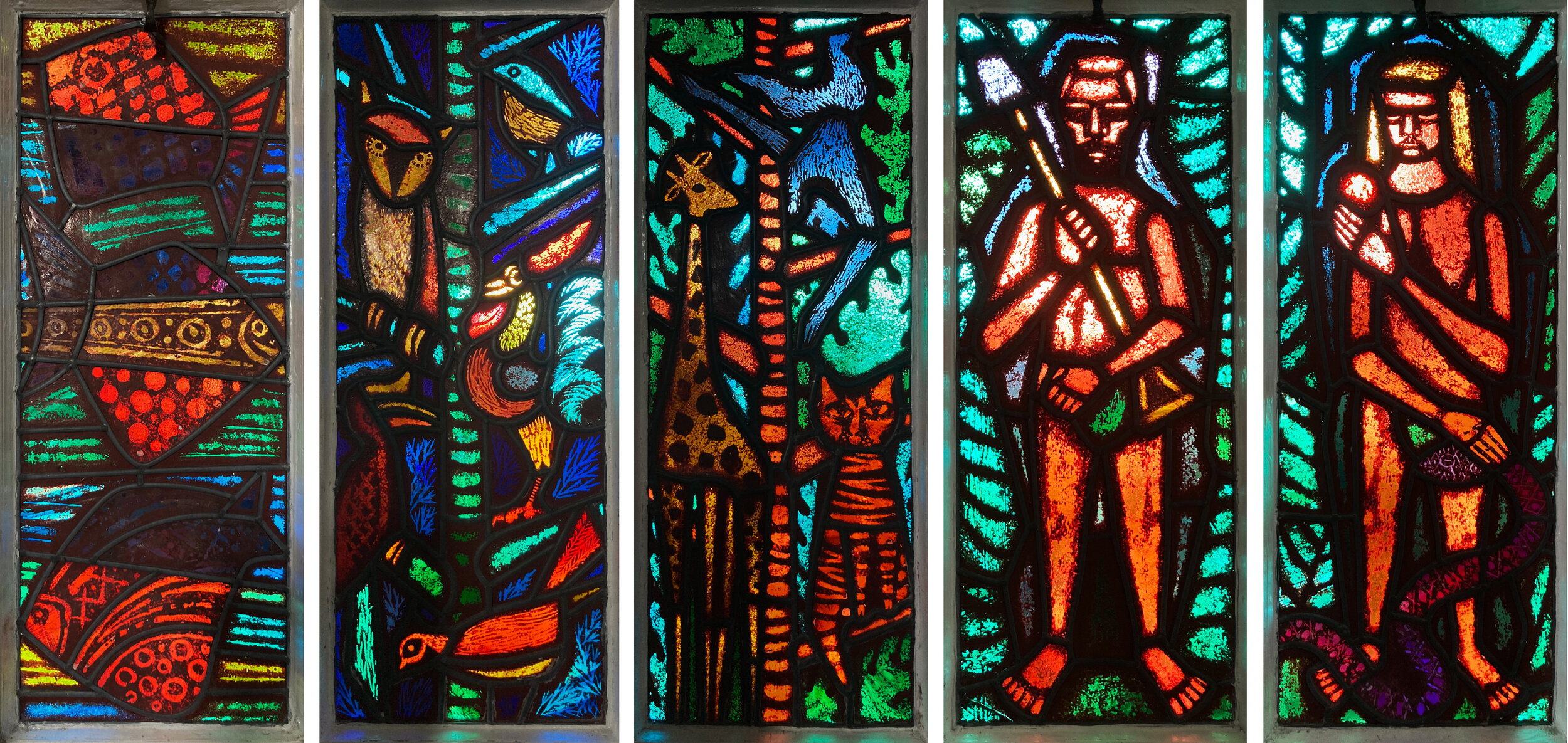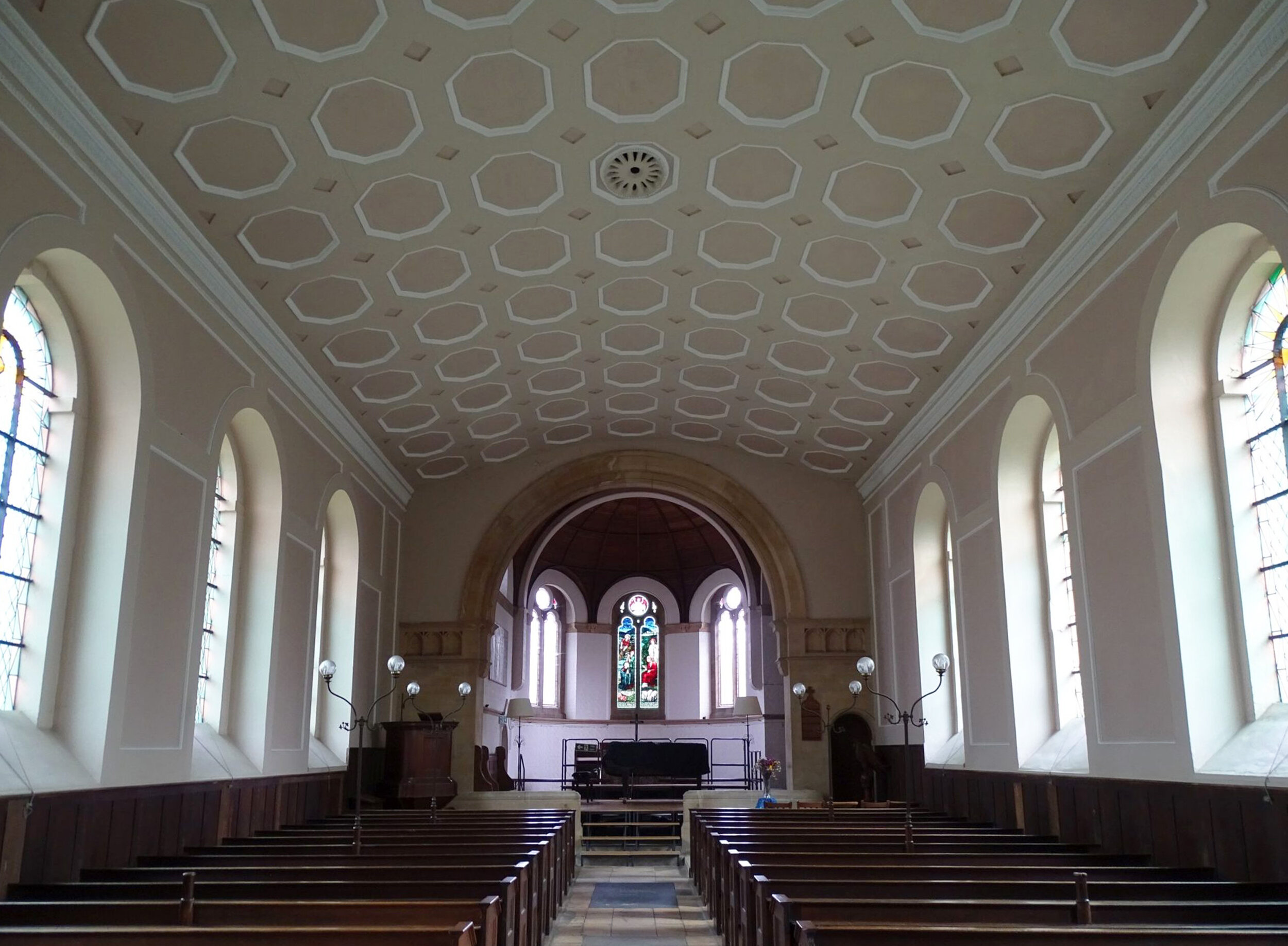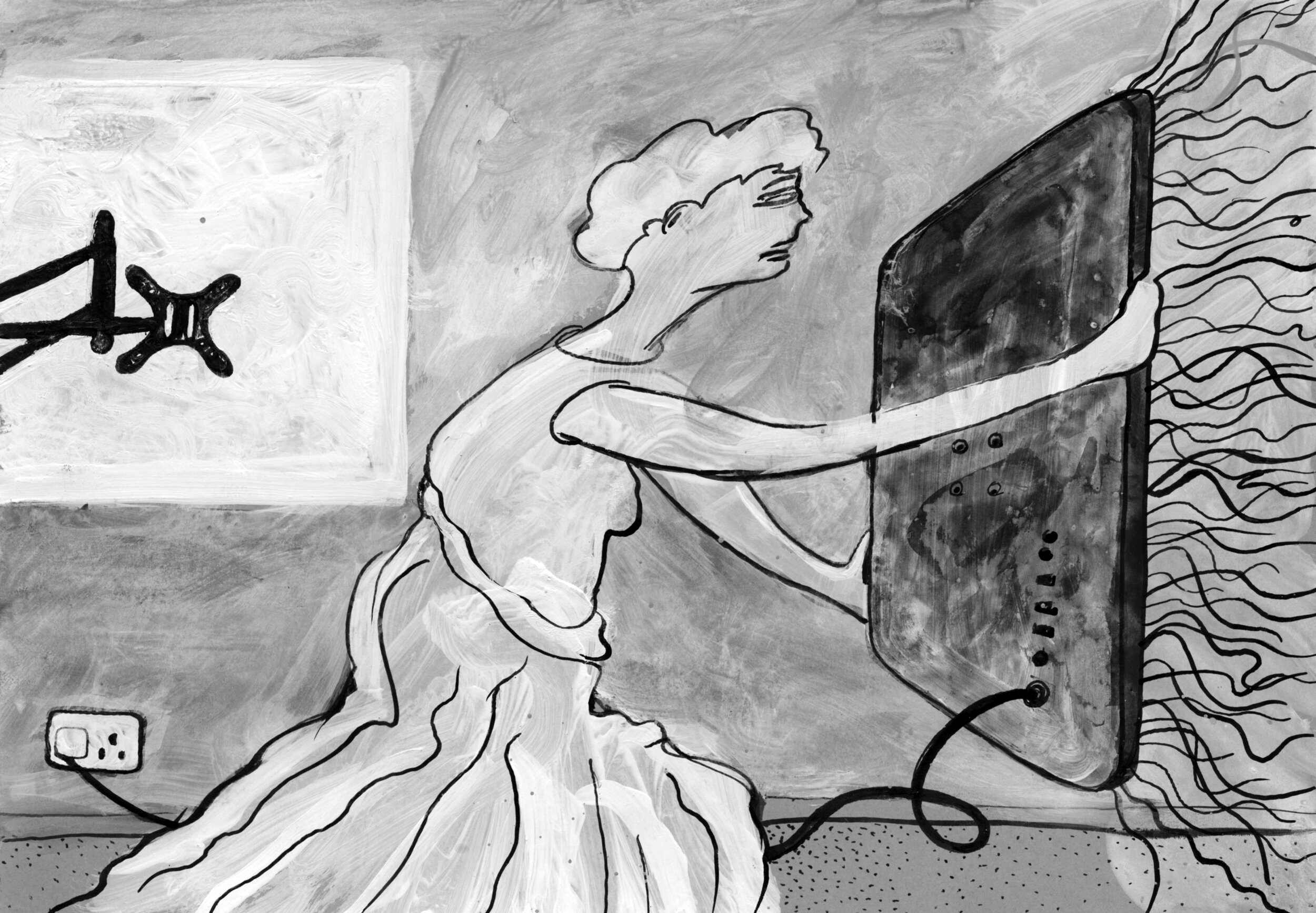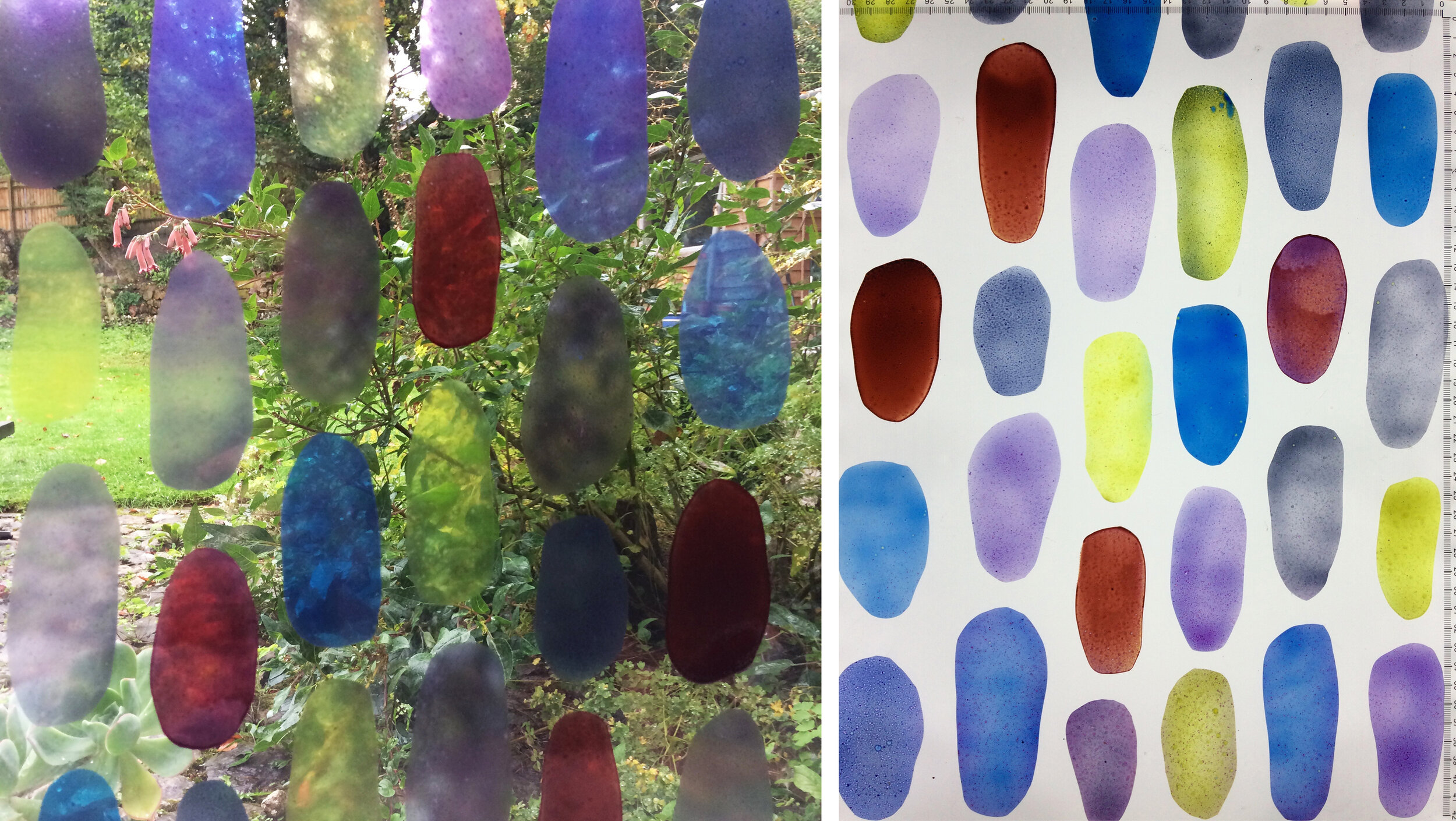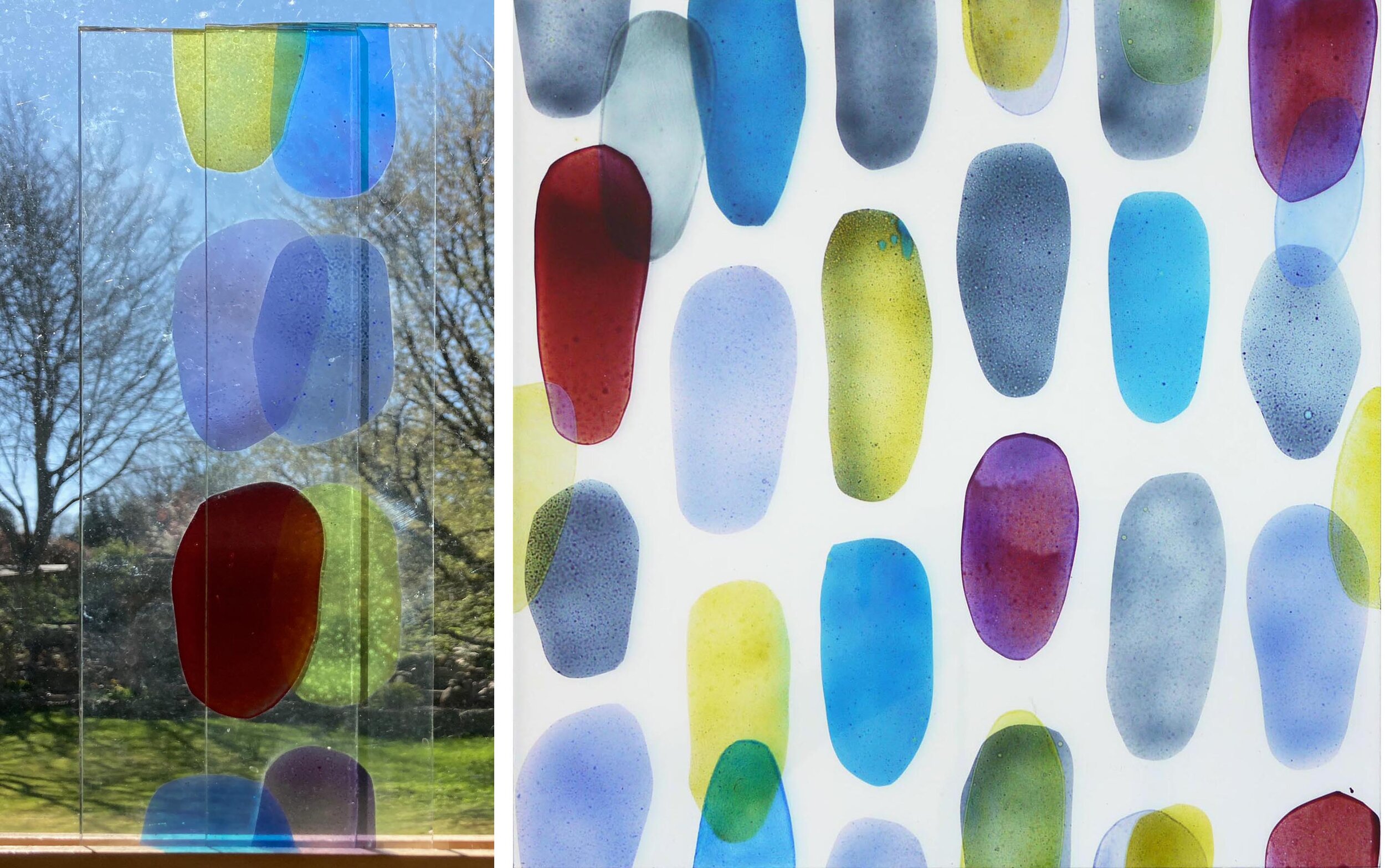St Anne, East Wittering, West Sussex. Designed by Harry Sherwood, built in 1959. Detail shows south wall.
On a trip to West Sussex I went to find a Madonna and child window by Patience Hallward I’d seen on the screen (below). She’s got cartoonish eyes but also beautifully drawn hands with delicate painting on the figure and the surrounding glass pieces. It was a treat to discover how interesting the whole church, built to replace an older one still standing and currently for sale, in the village is.
St Anne, East Wittering. Chapel dedicated to St Mary built in 1986 with windows by Patience Hallward, made in 1951 for the church that this one replaced.
Everything in the church is considered and appropriate to the architecture, from the staircase to the kneelers to the original wall heaters. It has recently been painted blue, the very welcoming ladies in the church said ‘You can imagine how long it took for the colour to be agreed’ and they also said that they didn’t like all of the stained glass. The small lower windows throughout the church are filled with a complete set of stained glass windows, contemporary with the church, by John Baker. He was a teacher, maker and restorer of the stained glass at Canterbury Cathedral, well known also for English Stained Glass of the Medieval period, a Thames & Hudson book of colour plates that I’ve owned since 1978.
Interior of the church showing row of ten windows along the south wall.
Windows 1 to 4 (5 is missing, being repaired). Also shown in photo above left.
Windows 6 to 10. Also shown in photo above right.
The windows have a huge impact in terms of colour, which you can see particularly well in the photo of the interior with coloured light illuminating the window reveals of the first three windows in the sequence. The use of strong colour with black iron oxide paint disguising the lead lines is particularly marked throughout, the only places where this doesn’t work are where the windows are positioned opposite one of the large clear upper windows which throw too much front light on the stained glass directly opposite. The first ten windows illustrate Creation, I think the missing one may show plant life. It turned out that the ones the church ladies weren’t keen on were the bird and animal windows (7 & 8 in my numbering) on the grounds that they don’t fit in with the sequence stylistically. I think they are right and the designs, although attractive, are too complicated unlike the Adam and Eve that follow in the sequence and are very strong.
Window 11 - St John the Baptist, Window 12 - Pentecost, Window 13 - Saul’s conversion.
The best three are at the west end of the church, with powerful figures, faces and colour combinations (above). There is another row of five in the chapel (below) which have much less impact, which I think is due to the complexity of the designs with their kaleidoscopic colour combinations.
New testament scenes in the Chapel.
Earnley Church exterior and interior showing the two stained glass windows.
Next stop was Earnley, just a mile and a half away, a church with no dedication to a saint and a 13th century nave. This church is also exceptionally well cared for and has been restored, redecorated and refurbished continuously since the 1970s, resulting in new stained glass and tile panels. These modern artworks are all small, discreet and of high quality.
East window, Dove by Mel Howse 2005. South window, Jonah made by Paul and Angela Soderberg to designs by Yvonne Rusbridge (Hudson) in 1987, details below.
The south window (above right) is particularly interesting, with a solar motif at the top and glazing pattern similar to John Baker’s creation windows. It is dedicated to the memory of Yvonne Rusbridge, an artist who worked in various media including tapestry, terracotta and embroidery and whose husband was churchwarden here. The makers combined some of her designs to create a window depicting Jonah praying as he sits inside the whale (below right), the whale just a lead line that cuts across the waves, its eye another simple circle. Yvonne Rusbridge designed and made two tile panels for the church (bottom) that are also lovely - they show the presentation in the temple and the meeting of the Virgin Mary and Elizabeth.
Tile panels by Yvonne Rusbridge (Hudson)
These sister churches present a great opportunity to see twentieth and twenty first century glass close up, they are always open, with a very friendly and knowledgeable welcome.




